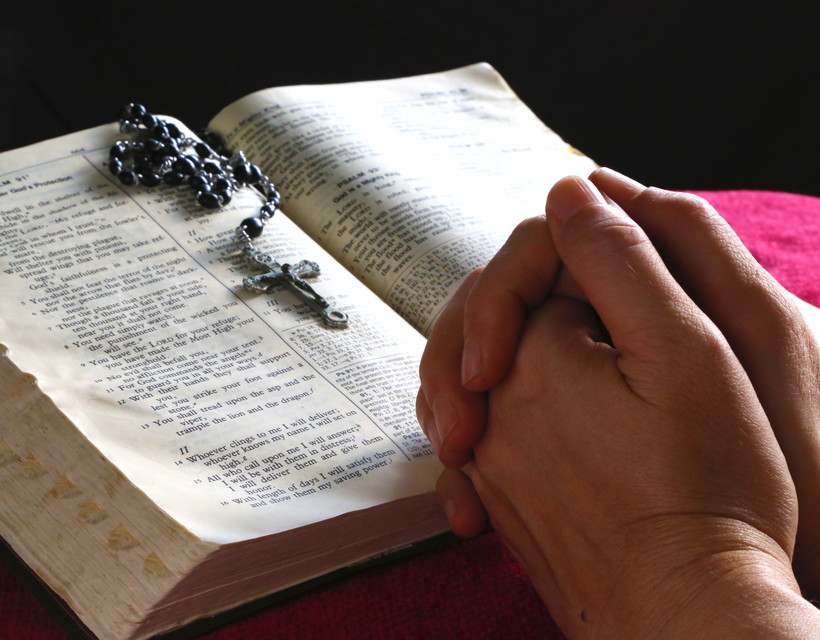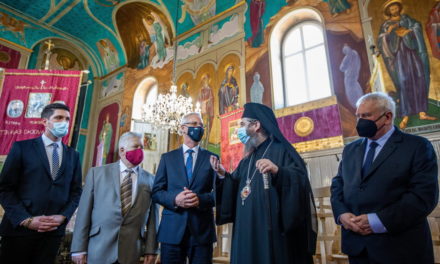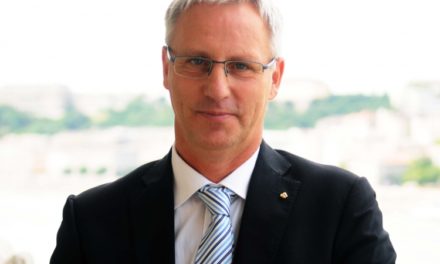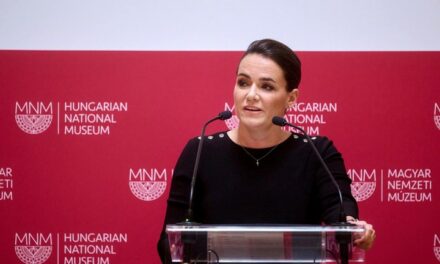The work of the Civil Justice Committee, founded by CÖF-CÖKA, basically involves the presentation of crimes committed during communism that have not yet been investigated and thus remained without consequences. The least explored area is the campaign against Christian priests, nuns, and even ordinary believers. The communists knew well that the community of religious people was the most dangerous for their anti-human utopia, so it is understandable that intimidation and even physical abuse "fit in" with their action against the clerical reaction. Zoltán Osztie's analysis reveals these crimes.
In the previous part of our series, the author presented individual destinies. We will continue this now.
Ilona M. Király Dr.
Ilona M. Király is known to many in the life of the Hungarian church . Who was He? Nun, Hungarian-Latin-French high school teacher. He completed his studies at the Péter Pázmány University and graduated from the Sorbonne in Paris. He completed his doctorate and then joined our Institute in Budapest. He painfully mentioned several times that without the consent of his parents, who could not give away their only child at that time.
After completing the novitiate, he taught at the Institute's girls' high school in Budapest. His students claim that every class was an experience. He really taught his subjects to a very high standard - but he also turned to spiritual literature and theology with the same interest. The Ward Mária College, a religious education school, operated in our institute since 1917, which was founded by P. SJ Bíró and Mária M. Almássy . Many excellent religious teachers came out of here, who noticeably boosted the religious life of Budapest and its surroundings. Before the closure of this school, Ilona M. Király was its last headmistress. Her immediate predecessor, Katalin M. Bali, was also a very excellent nun: her personality, spirituality and wisdom made her similar to Mária Ward's first companions. The ancient spirit of the Institute and loyalty to the Church radiated to a high degree.
When the schools were nationalized in 1947, the religious education school operated legally for a while in the Váci utca monastery, then in Szerb utca. Intensive teaching took place here, with an excellent faculty, examinations, and the distribution of diplomas.
The party state closed the school in 1951, seized the premises, and confiscated the seal. After that, no one received an official diploma - but many girls wanted to continue their studies. These girls turned to Aunt Ilonka for help - and she took the risk. It was also undertaken by self-sacrificing families and individuals, whose apartments continued to teach in small groups. The responsibility fell primarily on Aunt Ilonka's shoulders, but also on the teachers' shoulders, since most of them were exposed persons. I mention their names, especially those who dealt with them for a longer time: István Kosztolányi taught biblical studies, Márton Pantol taught liturgy, János Örkény taught morals, Lajos Turi taught church history, and József Buzai taught dogmatics. He only for a short time: due to his busy schedule, Dr. Kiss Csongor OFM, who, on the other hand, dealt with them for a long time, i.e. also provided the students with further training. Aunt Ilonka taught Latin, Father Csiszér taught apologetics.
The vigilant guards of the party state naturally discovered this work and let us know in every way that they were watching. It happened that the doorbell rang sharply and two plainclothes police officers walked through the apartment. It was also common for them to stand under the window and accompany me after hours. For example, it happened to me that they came to my workplace, pretended to be priests, and then took me straight to the Aradi Street police station. They kept me there until midnight and took all the books and documents I had. At the same time, Dr. Csongor Kiss was also summoned and some other students. They wanted to make promises, but we didn't promise anything. The stake was clear. "I am persecuted and you will be persecuted." It never crossed our minds to stop learning and teaching. (Indeed, almost all of us taught religious education in apartments, mainly in families with teachers, because they could not even send their children to church religious education.)
It was not uncommon for us to teach the children of military officers and other party members. Aunt Ilonka was always at the forefront of this work. His ingenuity and versatility showed even in these miserable and dangerous conditions. We got to know the children of different families, organized spiritual exercises, went on trips, etc. Márton Pantol celebrated the masses usually held in apartments. The synod had not even heard of it, but the texts, with the exception of the canon, were already in Hungarian. The pleas were edited together with the children. we shook hands at the reconciliation and the Lord's Prayer. In the meantime, the attention of the pro-state parties increased.
The parents persistently asked for further education. It happened that there were 25-30 children at one family on a spiritual day, at a Scripture competition, etc. We also prepared them for first communion and confirmation, because their parents did not officially allow them. The children were taken to distant churches, far from where the parents lived. There were plenty of small incidents, about which we laughed a lot later. For example, once on the way back, the HÉV car was full of people wearing leather jackets. Previously, we tried to remind the children that this is a trip. We thought that this way we might avoid some inconvenience. But when our most energetic child was asked, "Where have you been, little brother?", he loudly snapped at him to "confess"! His face just glowed. Another time - this was my stupidity - I gave the ÁVO the slip containing the entire program of the spiritual day on Sunday. A team of university and high school students was prepared for this day, led by a very excellent spiritual father. However, he was placed under house arrest, which I did not know about. I called the father's apartment with the name and address. I was greeted by a man disguised as friendly, saying that he was the father's younger brother and that he had an assignment to receive the messages. I soon found out that I had fallen into a trap. On that Sunday afternoon, only the determined grandmother remained in the mentioned apartment, but this time - thank God - the expected consequences were avoided.
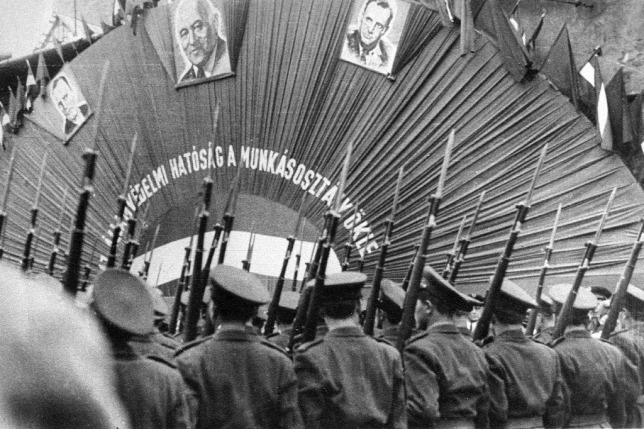
image source: Veritas
However, house searches, interrogations, and arrests became more and more frequent, and women also took their turn. After countless harassments and inconveniences, Aunt Ilonka was arrested on December 5, 1955. His mother was left alone in the apartment, which had been completely turned upside down by the house search. At the same time, a young girl, one of aunt Ilonka's loyal colleagues, was also abducted. Most of the students were constantly harassed and summoned under the title of "accused witness", and their houses were searched in several places. At all costs, they wanted to involve Aunt Ilonka in a serious political trial because of her French connections. Since this did not succeed, the other charges remained: secret operation and operation of the Ward Mária College, religious education, etc.
First, he, like the other prisoners, the Fast Car, or after that he went to Fő utca - where so much innocent suffering cries out to the sky. then taken to Kalocsa, the well-known and notorious women's prison, where many nuns were imprisoned at that time. When we went to visit them from Pest, the bus was full of acquaintances.
I had an unforgettable and creepy experience in Kalocsa. Aunt Ilonka was standing on the other side of the bars with the other prisoners. There was a barrier between the visitors and the visited. His first words were: "Did you bring it?" He thought of the Blessed Sacrament, which he so painfully lacked. Yes, I answered, but the situation is impossible, I pointed to the guards who were standing behind him and flooded the entire room. "Throw it in!" - he said with such superior confidence that I obeyed, even though I almost trembled at the possibility of desecration. And it worked. After that, we already sent the "Food" in a package, in the form of biscuits, wrapped in white paper, hidden among the other food. After months, the female political prisoners were brought to the Collector's Prison. The situation in the country changed slowly: October 23, 1956 was approaching.
One by one, the arrested monks and religious women returned home. The luckier ones were those whose lawsuits had already been heard. They were usually sentenced to the same amount of time they had already served in pretrial detention. Unfortunately, the trial of Aunt Ilonka's case was scheduled for October 27 or 28 at the second level. Of course, this could not be kept due to the revolutionary events. The first one was held in Marko, several of us were summoned as "accused witnesses". This trial was in some respects ridiculous, for the judges and magistrates were uninformed to an incredible degree in matters of the Church, and asked such questions that we could hardly decipher what they were asking. Ex: Do they have "encyclopedias" in their possession? I definitely remember this question and I think everyone could add something similar.
After the revolution was crushed, Aunt Ilonka lived modestly and in seclusion with her mother. He taught Latin and French and helped his students and their families in everything. Most of his time was spent in prayer. This was always his primary need and he never gave it up. He hardly talked about his experiences in prison, so I can't even quote him. He said that it was a joy to have a nun as his cellmate. He spoke of a Sister of Eternal Worship, a Sister of Mercy, and the provincial superior of the Social Sisters, sister Helga, who was a very excellent person. In the cell they prayed, learned English, quoted literature: so they lived in peace and usefully. Aunt Ilonka did not – understandably – deal with the Ward College at this time, but a small team maintained continuity, Dr. Under the leadership of Kiss Csongor OFM.
Aunt Ilonka was troubled by the fact that her case was not yet definitively closed. The anxiety was not unfounded. He was arrested again on February 7, 1958. The apartment was completely turned upside down with the house search, and his books were taken. Now he was sent to Tököl, to the concentration camp. We recently saw a television film about this terrible place and heard the recollections of sobbing old ladies. He also endured this situation with difficulty, but with patience. There were hundreds of them in one room, only a few of them were political prisoners among the many common law. These wretches were revolted by the confinement and bad conditions in general, and were therefore roused several times a night, and the whole company put on their guard, and similarly tortured. I visited Aunt Ilonka once every month. We stood for hours in the hot sun or cold wind until it was our turn. Aunt Ilonka's physical condition noticeably deteriorated. He always asked us to try to do something about him. We tried everything, but this "everything" was very little. Only authorized lawyers could undertake the so-called "zero" cases. Those who were benevolent among them were also restricted by the party state. Finally, after about a year and a half, his case was settled.
After that, his life was filled with much prayer, quiet apostolic and spiritual work. He finally got his own home with his mother in Buda. This was a big step for them, as their apartment was completely bombed during the war. Then came the illness and death of his mother, and then he discovered the signs of cancer in himself. He went to the doctor late. In his last months, he was engaged in medieval research, which had always been a matter of his heart. He was particularly interested in the person of St. Margaret of Árpád-házi and the data relating to him. With great effort, he successfully completed his book, which was published by the Szent István Society in 1979 under the title "Saint Margaret of Árpád and the Island". Aunt Ilonka died on Pentecost 1981, after a long suffering. His fragile figure, his gaze radiating deep faith and spiritual strength accompany all those who respected and loved him.
(to be continued)
Author: Zoltán Osztie
(Header image:

